Just an hour’s flight from Shanghai and situated on the southeastern banks of the Yangtze River lies Nanjing, China, a city of 9.55 million that is also the capital of China’s Jiangsu province. Although not generally considered a tourist spot for Americans, clients looking to get off the beaten path (and looking to add onto — or bypass — the hustle and bustle of Shanghai and Beijing) will be pleasantly surprised with the destination’s history, art, culture and technology.
Here are 10 must-see attractions in Nanjing, China.
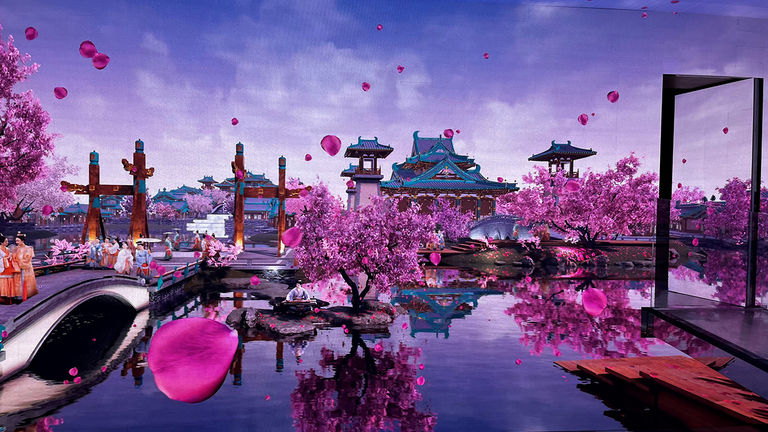 Jinling Town offers a 5-D interactive virtual reality experience for visitors.
Jinling Town offers a 5-D interactive virtual reality experience for visitors.
Credit: 2024 Emma Weissmann
1. Jinling Town
In an ode to ancient Chinese culture and the history of Nanjing itself, Jinling Town was created to reflect what life was like during the Six Dynasties era, when Nanjing served as China’s capital city. The theme park, located within Nanjing’s Niushoushan Cultural Tourism Area, was built during the COVID-19 pandemic and showcases the practice of feng shui design; it features winding pathways, bridges, serene gardens and flowing water features.
Both ancient and modern-day elements of Chinese culture are on display through the complex. Clients can take part in a virtual reality 5-D experience, view the many light installations, watch cultural performances, shop for local wares and dine at restaurants. For an especially immersive experience, book a stay at the area’s traditional guesthouse, which is situated the middle of the village, or book a Hanfu clothing experience at a local boutique, which includes professional hair, makeup and a photoshoot in traditional clothing. Tour guides are available.
2. Zijin Mountain Scenic Area
Zijin (Purple) Mountain Scenic Area invites city dwellers to experience Nanjing’s natural side. The area, which spans more than 7,660 acres, features nature paths, hills, temples and mausoleums. Active clients will enjoy hiking the steps up of the main hall of Dr. Sun Yat-sen’s Mausoleum (shown here), which is the burial site of the founder of the Republic of China (also known as the “Father of Modern China”).
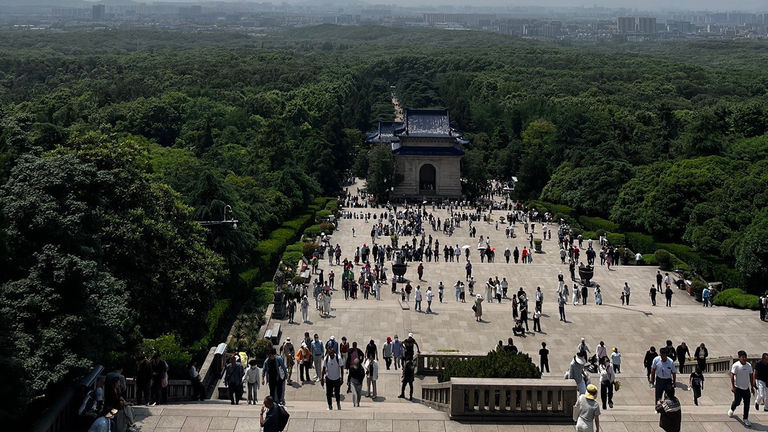 Clients can get their heart pumping during the walk up to Dr. Sun Yat-sen's Mausoleum.
Clients can get their heart pumping during the walk up to Dr. Sun Yat-sen's Mausoleum.
Credit: 2024 Emma Weissmann3. Ming Xiaoling Mausoleum
Near the Zijin Mountain Scenic Area is the Ming Xiaoling Mausoleum, a UNESCO World Heritage Site set at the southern foot of Purple Mountain. Winding paths and giant stone sculptures lead to the mausoleum of the Hongwu Emperor (the founder of the Ming Dynasty, which ran from 1368-1644) and his wife.
 Near the Zijin Mountain Scenic Area is Ming Xiaoling Mausoleum, a UNESCO World Heritage Site that features several outdoor sculptures.
Near the Zijin Mountain Scenic Area is Ming Xiaoling Mausoleum, a UNESCO World Heritage Site that features several outdoor sculptures.
Credit: 2024 Emma Weissmann4. Nanjing City Wall
Nanjing’s history as a city spans more than 2,500 years, and visitors will still find nods to the area’s past around nearly every corner. Offering 360-degree views of the area’s scenery — including Xuanwu Lake and Purple Mountain — and its modern — soaring skyscrapers and bustling city streets — the Nanjing City Wall stands looms large, ordered to be built by the founder of the Ming Dynasty and known as the world’s longest and best-preserved ancient city wall. Pedestrians can walk along the wall’s public sections.
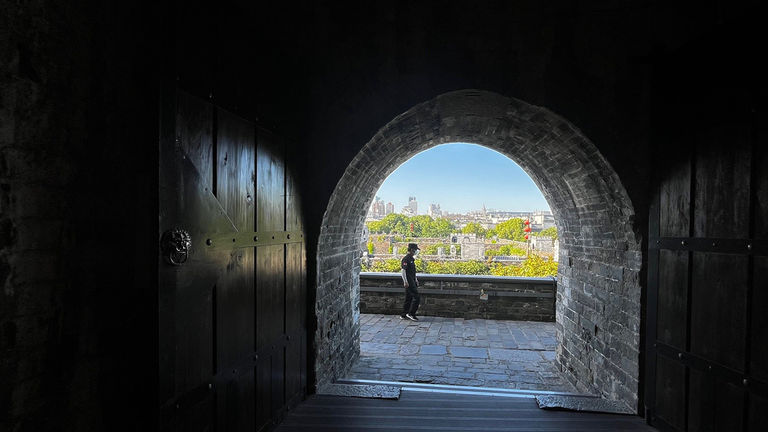 Nanjing's historic city wall is accessible to pedestrians in certain parts of the city.
Nanjing's historic city wall is accessible to pedestrians in certain parts of the city.
Credit: 2024 Emma Weissmann5. Confucius Temple Shopping Area
Although it is perhaps most well-known as one of the four major Confucian temples in China, the Confucius Temple district within Nanjing’s Laochengnan Area is now a thriving nightlife and shopping district that welcomes tourists and locals alike. Its busy streets are lined with souvenir shops, boutiques featuring crafts from local artisans, and myriad restaurants. The space is also home to the Spring Festival each year.
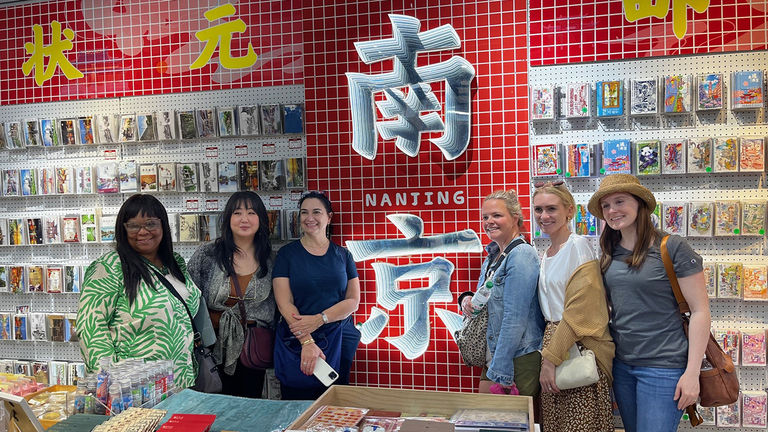 Confucius Temple area has a variety of shops.
Confucius Temple area has a variety of shops.
Credit: 2024 Emma Weissmann6. Qinhuai River Cruise
A one-hour canal cruise along the Qinhuai River affords beautiful views of several city hot spots, including Bailuzhou Park, Qicai Water Street and more. Book a cruise with guided narration and sit back while the city passes by; street art installations and people-watching can be enjoyed, along with an included pot of tea and local snacks.
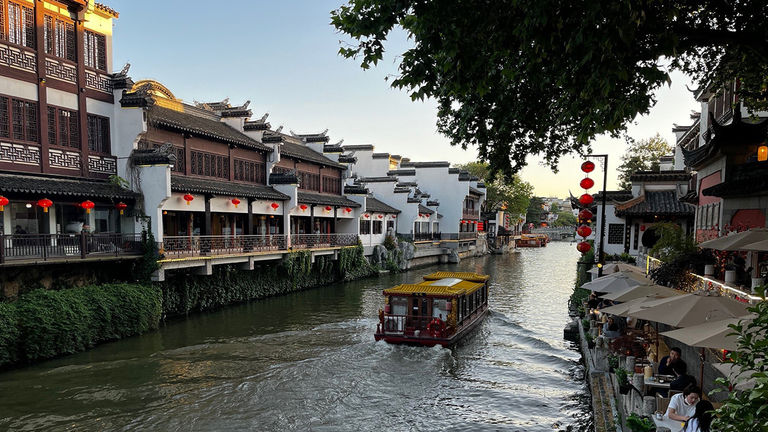 A cruise on the Qinhuai River takes about an hour.
A cruise on the Qinhuai River takes about an hour.
Credit: 2024 Emma Weissmann7. Nanjing Silk Brocade Museum
The only museum of its sort in all of China, Nanjing’s Silk Brocade Museum gives visitors an inside look at the traditional silk weaving and inlay techniques, which have been listed as “a world intangible cultural heritage” by the United Nations. Visitors can view stunning works of art here, browse the gift shop and can even see the technique in action.
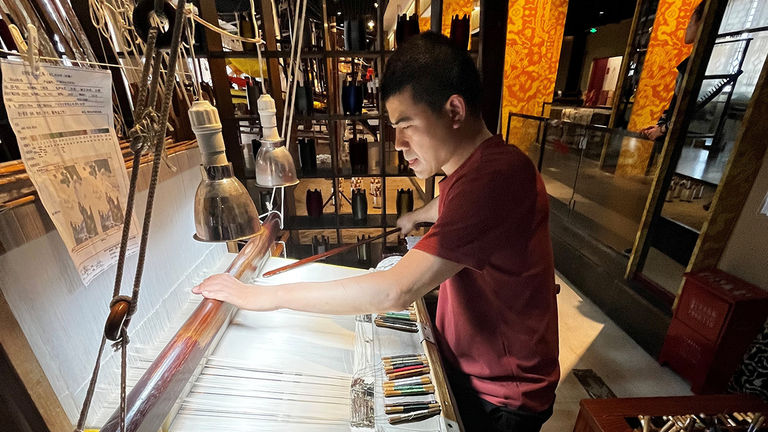 See ancient techniques at the Nanjing Silk Brocade Museum.
See ancient techniques at the Nanjing Silk Brocade Museum.
Credit: 2024 Emma Weissmann8. Usnisa Palace
Usnisa Palace, located within the Niushou Mountain Cultural Tourism Zone, is a pilgrimage site for followers of modern-day Buddhism, combining ornate detailing and striking architecture into one breathtaking complex. A large Buddha statue rotates in the center of the temple, which is located underground — but while that’s the central focal point, it’s hard to keep the eye from wandering. It is also said that the Buddha’s Parietal-bone relic is buried at the site.
The outside of the palace (pictured below) is equally as stunning, featuring unique architecture elements and a water feature.
 Usnisa Palace is located within the Niushou Mountain Cultural Tourism Zone.
Usnisa Palace is located within the Niushou Mountain Cultural Tourism Zone.
Credit: 2024 Emma Weissmann9. Nanjing Massacre Memorial Hall
Today’s visitors to Nanjing may associate the city with the Nanjing Massacre, which took place in 1937-1938 over a period of six weeks, in which the Imperial Japanese Army invaded the city, killing 300,000 residents.
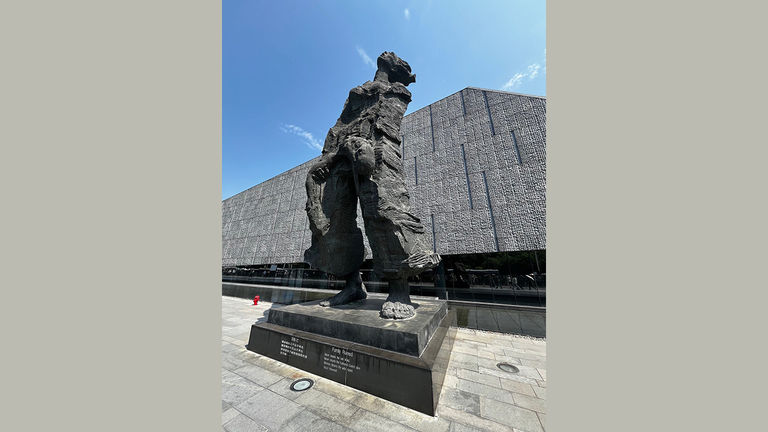 the Nanjing Massacre Memorial Hall recognizes the victims of the Nanjing Massacre, which took place between 1937 and 1938.
the Nanjing Massacre Memorial Hall recognizes the victims of the Nanjing Massacre, which took place between 1937 and 1938.
Credit: 2024 Emma WeissmannThis striking sculpture, inspired by a photograph taken during the massacre, greets visitors outside Memorial Hall and serves as a foreshadow for what visitors will see inside Memorial Hall. Since its opening in 1985, the exhibit has received some 90 million visitors. Its exhibits — which comprise photography, videography, written word, sculptures, artifacts and even a haunting mass grave site — are an important reminder of the city’s resilience.
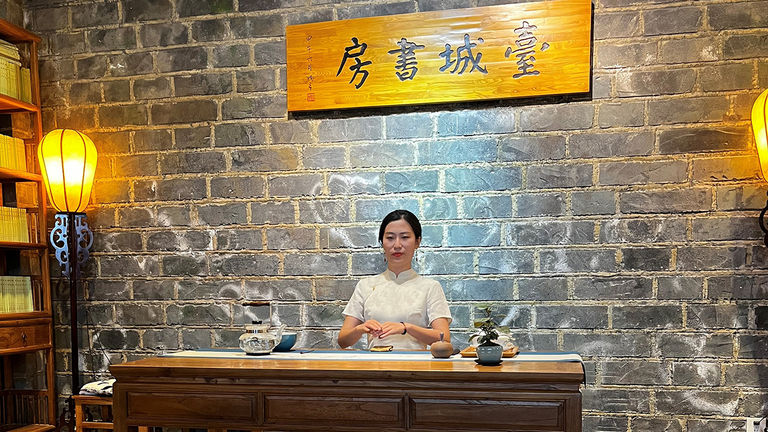 Lao Cui Teahouse is built right into Nanjing's City Wall.
Lao Cui Teahouse is built right into Nanjing's City Wall.
Credit: 2024 Emma Weissmann10. Tea Ceremony at Lao Cui Teahouse
Calligraphy is known as a traditional art in China, and visitors seeking interactions with locals and immersive experiences can opt to attend a traditional tea ceremony, followed by a calligraphy class. One such tea house (Lao Cui Teahouse, shown here) is built right into a piece of Nanjing’s City Wall.